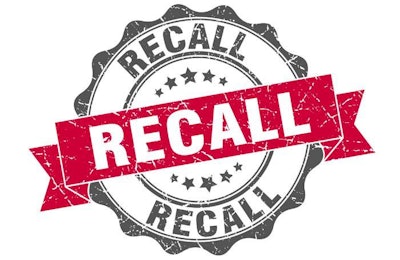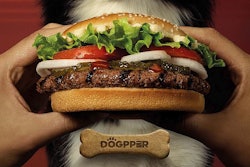
Has enough changed with pet food since the devastating melamine-related recalls in 2007? That was the question posed by David Lummis, lead pet market analyst for Packaged Facts, in a new column on PetProductNews.com. People working in pet food, at least in the U.S., definitely know much has transformed and improved in the industry since then — but is it enough? Or have all been the right changes?
Full disclosure: Lummis used to write a column for Petfood Industry and spoke frequently at our Petfood Forum conference; in fact, he opened this new column with a memory of taking the stage at Petfood Forum in April 2007 during the height of the recall crisis. From that time and reading his columns since, I consider him an informed industry observer albeit without the in-depth knowledge and experience of someone working with a pet food company or in another industry capacity.
Thus, I agree with some of his points yet believe they don’t go far enough in exploring what has changed and what hasn’t — and why.
Recalls prove the pet food safety system is working
Lummis acknowledged all the new pet food regulations, protocols and safety measures (and the costs associated with them) put in place since the 2007 recalls, including those that are part of the Food Safety Modernization Act (FSMA) passed in 2011. Yet he also cited the number of pet food recalls occurring with what seems like regular frequency since FSMA passed — such as the recent ones involving high levels of vitamin D (which perhaps inspired Lummis to write on this topic now) — commenting, “One can argue that such ‘catches’ are a sign that the new safety net is working.” And he’s right, one of his points I agree with most.
But I can’t help also agreeing with his very next comment: the ongoing recalls have only ratcheted up concerns for consumers, retailers, veterinarians and the media. Even pet food professionals from markets other than the U.S. have doubts; I’ve heard one or two wonder what’s going on when a spate of recalls are announced.
The reality is that the U.S. Food and Drug Administration (FDA) has more stringent standards for certain contaminants in pet food than in human food — for example, a zero tolerance for Salmonella. Thus, many pet food recalls involve that bacteria (one of its 2,200-plus strains), often in only minute amounts. In addition, FDA and state inspectors sometimes target other contaminants or types of pet food, like raw. In many cases, product lots are recalled before ever reaching or, thankfully, affecting any pets or their humans. These situations do indeed prove that the system is working.
And, even though it sometimes seems that pet food recalls are rampant, there are still far fewer than for human food. From January 2016 to now, there have been 68 pet food recalls, according to FDA’s recall registry, compared to 815 for human food. In other words, pet food recalls number less than 10 percent of human food recalls and average fewer than 25 a year. Perhaps it seems more have happened because they get so much focus, thanks to the elevation of pets as family members, plus the frightening memories from 2007. On the other hand, it seems that only really large human food recalls, where multiple people in multiple locations are sickened, attract much attention.
What hasn’t changed — and possibly should
Still, it’s certainly understandable why people outside the industry are often alarmed by ongoing pet food recalls. “The challenge now is helping the public realize that recalls are part of food safety programs,” said Cathy Enright, then president and CEO of the Pet Food Institute, at the 10-year mark of the 2007 recalls.
Communication challenges like that are one thing that haven’t changed since then. And that’s at least partly because not everyone in the industry fully grasps just how worried and alarmed pet owners become — and remain — over recalls and similar situations affecting their beloved pets and the food they buy to nourish them. That worry extends to the veterinarians and retailers to whom pet owners turn for nutrition and pet food advice.
This year’s FDA alert about atypical cases of canine dilated cardiomyopathy (DCM) possibly linked to grain-free pet foods provides a good example. There have been no updates from FDA on its investigation since September, nor any new information from veterinary cardiologists and nutritionists doing their own studies. The lack of new developments or information has seemed to prompt some people in the industry to believe the situation and concerns are over.
But that’s far from the case for pet owners and veterinarians, judging by conversations on social and other consumer media, in addition to published papers in journals. For example, the Journal of the American Veterinary Association just published a paper by veterinarians summarizing the history of DCM in dogs and cats, as well as the current situation, and recommending that practicing veterinarians continue to be vigilant in looking for symptoms of DCM, screening all dogs in a household in some cases and taking a thorough diet history of all their canine and feline patients. The veterinarians also referenced other investigations still ongoing.
The paper also points out the lack of scientific research on most of the ingredients in grain-free diets implicated in the DCM cases, mainly legumes, pulses and potatoes. These have only just begun to be studied in dogs and cats, and their diets. And that’s another thing that hasn’t changed much, unfortunately: there just isn’t enough publicly available research on so many of the ingredients now used in pet food, including interactions among them, processing effects and so on. That needs to be remedied somehow.
Pet food safety pledge the way to go?
Meanwhile, Lummis offered what could be a helpful, viable recommendation to pet food companies: “A straight-up safety pledge might go a long way for an industry that is in search of a new superpremium pet food standard … not to mention one catering to pet owners willing to do almost anything to protect their ‘fur babies.’”
















